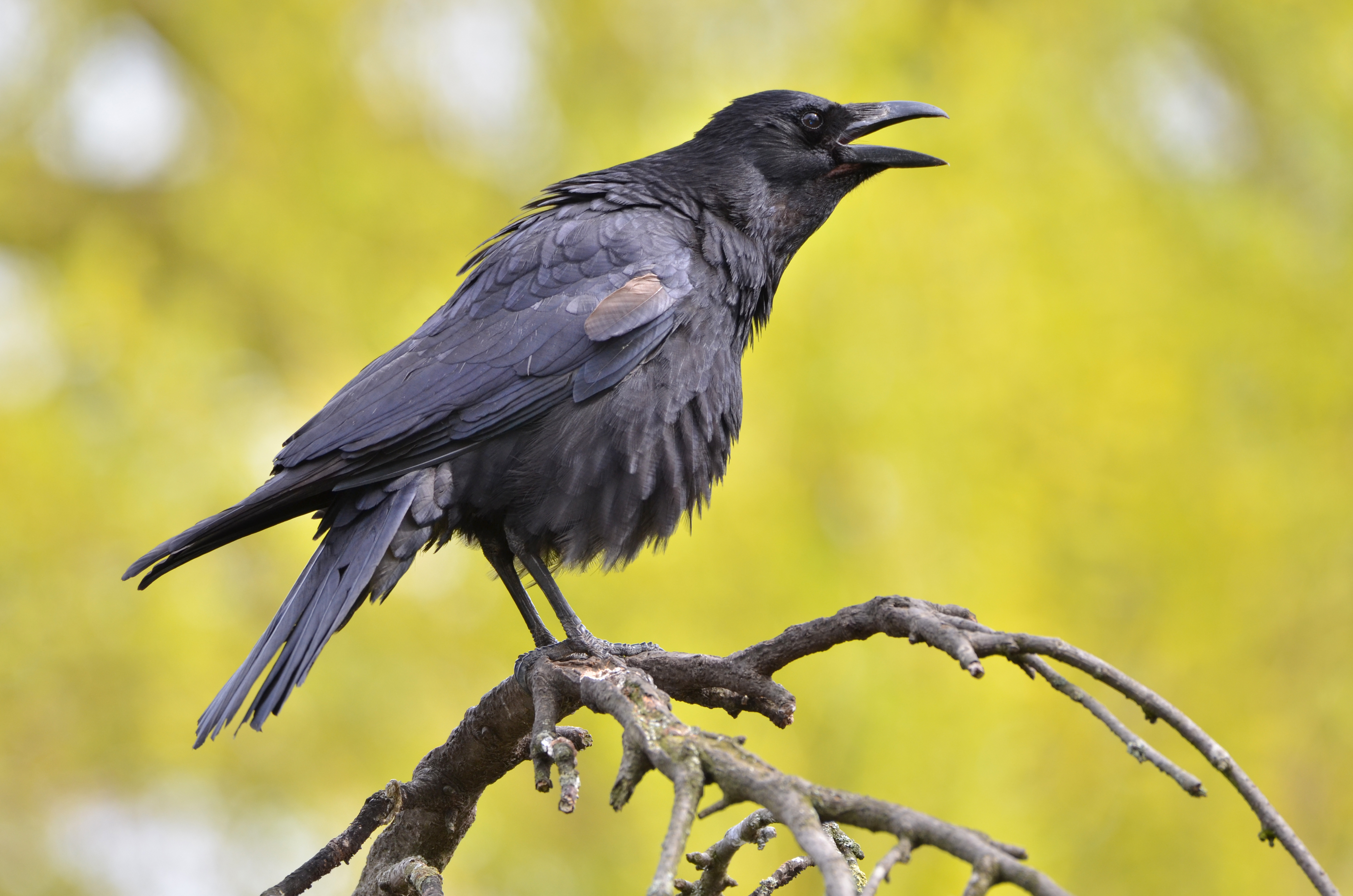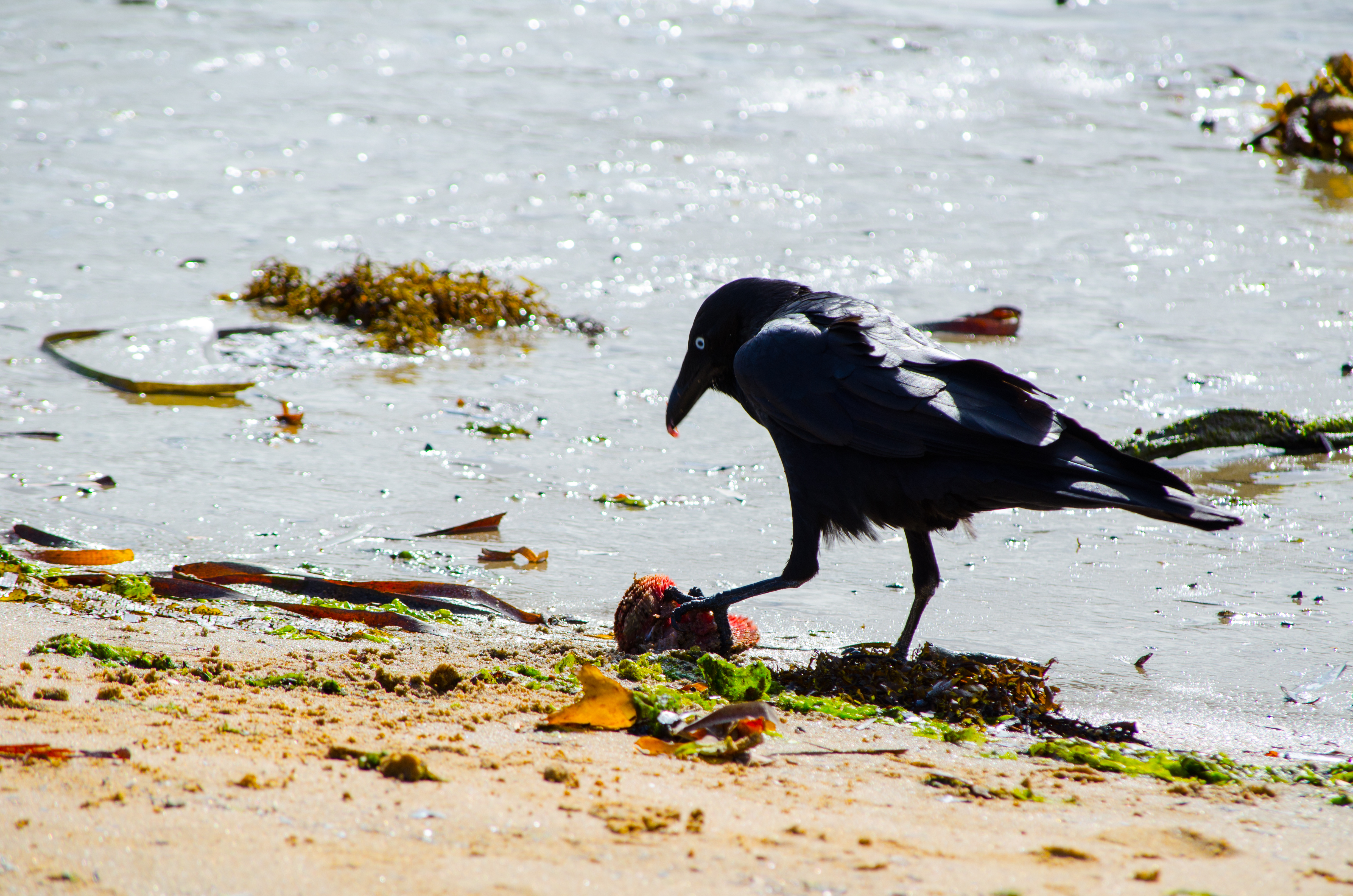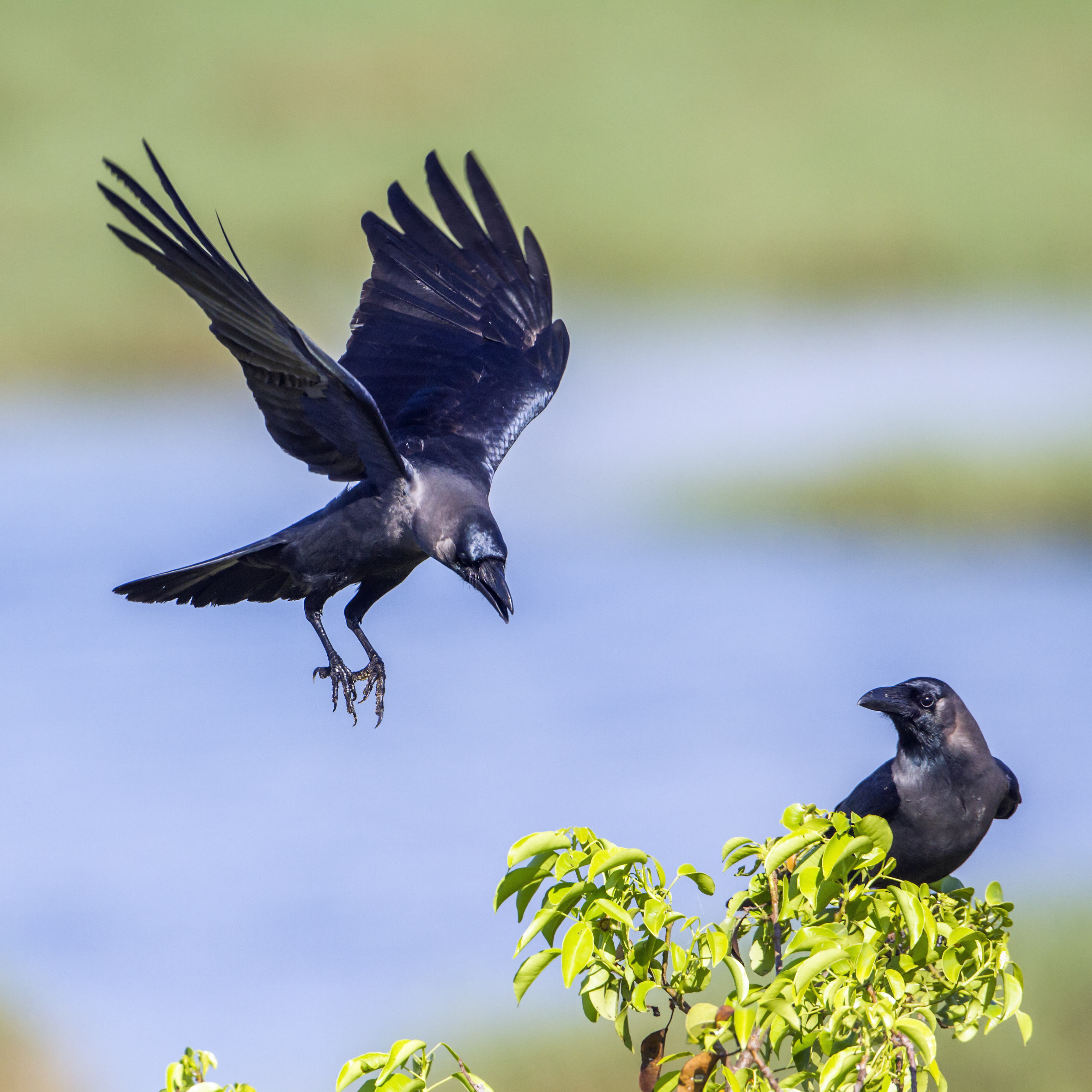Crow is any of a group of large, mostly black birds that live on all continents except Antarctica and South America. Crows rank among the most intelligent of birds. Many kinds have complex social behavior.
Kinds of crows.
The common American crow inhabits open areas and woodland edges throughout the United States and southern and central Canada. Other North American crows include the fish crow of the eastern and southeastern United States and the northwestern crow from the continent’s northern Pacific coast.
The carrion crow lives throughout most of Europe and Asia in a wide variety of habitats. The house crow lives around human settlements in southern Asia and parts of Africa. The Torresian crow inhabits Australia, New Guinea, and parts of Indonesia. The rare New Caledonian crow occurs on New Caledonia island and the nearby Loyalty Islands in the South Pacific Ocean.


The body of a crow.
Most adult crows measure from about 15 to 22 inches (38 to 56 centimeters) long. Males grow slightly larger than females. Most crows have only glossy black feathers, though a few also have gray ones. The birds have slightly curved, pointed bills with bristles covering the nostrils and bill base. Their strong feet make them good walkers and hoppers.
The life of a crow.
Crows typically build nests of sticks and bark, lining them with such soft materials as feathers, fur, and fine strips pulled from plants. They may place their nests near the tops of trees and shrubs, on cliff ledges, or even on telephone poles. Females lay about five eggs. Only the female incubates the eggs, but the male usually feeds her. The eggs hatch after about 16 to 20 days. For many crows, both males and females care for the young. The young leave the nest after about 28 to 43 days. But the parents may continue to feed them for several more weeks.

Most crows first breed at 3 or 4 years of age, sometimes older. Mating pairs generally stay together for many years in the same territory. In more sociable species, several helpers may assist a pair in raising chicks. These helpers include offspring of the pair or other crows from outside the family.
Crows use a number of sounds to communicate with one another. Studies of American crows have counted at least 23 different sounds. In most species, when the crows see or hear a predator, they call other crows with repeated long, loud notes. The birds then gather together to drive away the predator. Typical crow songs consist of a jumble of coos, caws, rattles, clicks, and other loud noises. Certain crows can mimic the voices of such animals as owls, dogs, cats, geese, and human beings. Loading the player...
American, or common, crow
The diet of a crow.
Crows consume a wide variety of foods, including small birds, eggs, rodents, shellfish, spiders, and the flesh of dead animals. The birds often annoy farmers by eating corn, sorghum, wheat, and other crops. Yet crows also feed on many kinds of insects, thus helping limit insect damage to crops.
Crows may use clever ways of getting food. Some may break open nuts and shellfish by dropping them on hard surfaces. People have seen New Caledonian and American crows modify twigs and leaf stems and use them to probe holes for insects.
